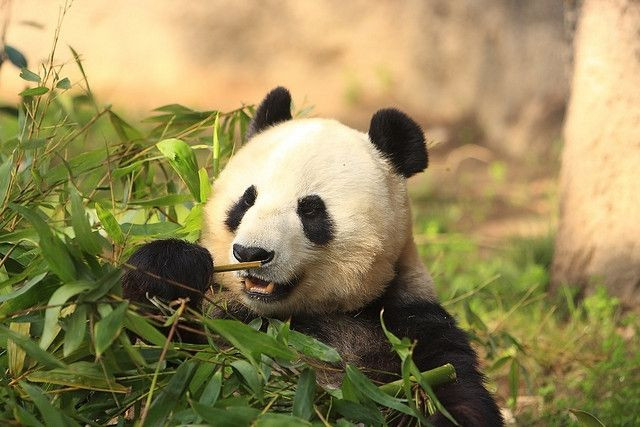Panda Poop Holds Key To The Future Of Biofuel, Sustainable Energy: Researchers Discovery Gut Bacteria Capable Of Transforming The Production Of Green Energy

Panda poop may usher in a new era of biofuel — at least if you believe what Dr. Ashki Brown, a researcher at Mississippi State University, has to say. At the 246th National Meeting and Exposition of the American Chemical Society (ASC), Brown and her colleagues announced that their current effort to restructure the production of green energy is making great progress thanks to Ya Ya and Le Le, two giant pandas from the Memphis Zoo. The team said that microorganisms in the animals’ feces could illuminate cheaper and easier ways to produce sustainable fuel from non-food plant material.
“We have discovered microbes in panda feces might actually be a solution to the search for sustainable new sources of energy,” Brown said in a press release. “It's amazing that here we have an endangered species that's almost gone from the planet, yet there's still so much we have yet to learn from it. That underscores the importance of saving endangered and threatened animals."
While the panda’s extreme bamboo diet has been common knowledge for some time, the corresponding digestive processes have gone largely unnoticed by the scientific community. Brown changed that with a 2011 paper, in which she and her colleagues rigorously mapped the gastric mechanisms responsible for breaking down the 20 to 40 pounds of stems, shoots, and leaves an adult panda takes down on a daily basis. Their efforts identified a particularly interesting gut bacterium capable of breaking down lignocellulose — an extremely durable plant material found in switch grass, corn stalks, and wood chips. According to the researchers, the bacterium would speed up the development of cellulosic biofuels, and allow the production process to move away from limited food sources like corn, soybeans, and sugar.
Now, two years later, the team has successfully mined panda poop for more than 40 additional microorganisms that all promise to benefit the industry in similar ways. In addition to potentially providing cheaper sustainable energy, the research promotes a deeper understanding of the giant panda’s biological processes, and can thus aid the future preservation of the endangered bear.
"These studies also help us learn more about this endangered animal's digestive system and the microbes that live in it, which is important because most of the diseases pandas get affect their guts," Brown explained. "Understanding the relationships between the microbes and the pandas, as well as how they get their energy and nutrition, is extremely important from a conservation standpoint, as fewer than 2,500 giant pandas are left in the wild and only 200 are in captivity."
In addition to Ya Ya and Le Le, Brown and her team are in the process enlisting a group of red pandas — a Himalayan member of the weasel family known for its comparable diet — in their studies.
Source: A. Brown et al. "Panda-Poop Power." Science Scope. Vol. 35, No. 2. October 2011.



























